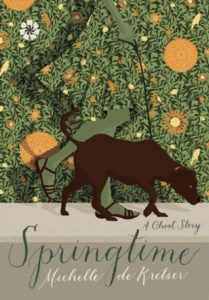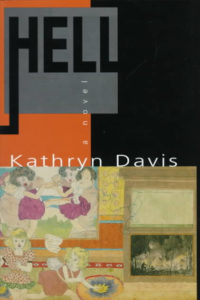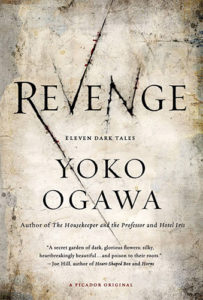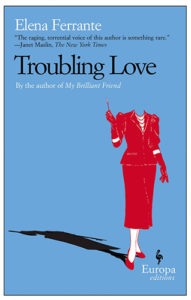
Books To Warp Your Sense of Reality
A Disorienting Reading List from Jac Jemc
In the realm of book blurbs, “losing oneself in a story” is one of the most unavoidable clichés. See also: “gripping reads,” “page-turners,” a book you “can’t put it down.” The specific experience of “losing oneself,” though, has a dissociative implication. Why is this the measure of a book’s worth? Why is the best-case scenario being able to leave one’s self behind? What happens when we, as readers, lose ourselves to a story that has also become disoriented in some way? Where do these circles of the Venn diagram overlap?
As a reader, my favorite way of losing myself is by investing myself in a storyline that falters in its security. I love the feeling of being knocked off-kilter, unsure of what’s to be trusted. This often coincides with the methods of communication getting scrambled in some way. Maybe the narrator changes the way they’re speaking and that alters my relationship to how literally I’m supposed to take their words. Maybe a certain expectation had been set as to the type of story I was being told, and it becomes clear that the story is shifting its course. Maybe reality appears to unhinge and allow in more possible varieties of event than had previously been expected.
I become engrossed in figuring out some new version of logic and regaining my equilibrium. Some fiction does you the service of providing answers, some allows you room to interpret, and some stays open until the very end, lingering in uncertainty. Whether I’ve worked my way out of the maze or not by the end, it is these disorienting texts that interest me the most. Below are six titles that have done just this for me.

Michelle de Kretser, Springtime
This is my kind of ghost story: set in a sunny suburb, so cheery and well-lit, it’s all the more unexpected when Frances spies something unusual in a neighbor’s yard out on a walk one day. The tale takes a dark turn as Frances becomes pre-occupied with what she saw, and then flips itself inside out again, when it reveals that Frances may well have seen a ghost, but it’s not the one the readers were led to believe. It’s short enough that you can read it before a single bedtime, but I suggest reading it in its natural setting: a garden, where you can just register passers-by through the gaps in a tall hedge. The book will have you eyeing even the most innocent people with a skeptical eye.

Marie Ndiaye, Self-Portrait in Green
I don’t think it’s an accident that most of the books on this list are brief. The stories tend to be dense, but short. Ndiaye’s book is no exception and it freaked me out. It’s hard to parse where the line is drawn between Ndiaye and the women in green she watches with a detached, almost surveillance-level point of view over the course of this book. She blurs herself into her hallucinatory descriptions of these women, posing the question: What is the difference between what we observe and what we experience? The terrifying conclusion could be just as unsettling: no such line exists.

Kathryn Davis, Hell
I should just go ahead and commit to putting this book on every list I ever make. I force it on all of my students and recommend it to everyone who will listen. Hell is the story of not one but three haunted houses, all existing in the same space and time. As a reader you must decide, from sentence to sentence which house it is you’re reading about. Maybe it’s all three, but the sentence means something different depending on the space you’re projecting it onto. It’s the most disorienting book I’ve read, and, with each subsequent reading, I never feel myself on firmer ground. A bold hall of mirrors that has you bumping into yourself until the end.

Yoko Ogawa, Revenge
Though Revenge is technically a collection of short stories, the tales intersect in ways that insist a different set of rules apply. On my first reading, I didn’t know how closely the stories would be related to each other and so when the first two stories featured enormous piles of kiwis, I wondered what was driving Ogawa’s obsession with the dark, furry fruits. As the stories progress, more vectors identify themselves: people buried in gardens, a carrot in the shape of a human hand, torture devices, tigers, tomatoes smashed on a highway, a working human heart perched on the outside of a woman’s body. The images of this book accrue such a weight that I find myself lingering in the fantasy world where they make sense, wondering what life would be like if guided by this alternate set of near-sacred symbols.

Elena Ferrante, Troubling Love
Everyone loves the Neapolitan Quartet, and for good reason, but my favorite of Ferrante’s books is Troubling Love, a disgusting ride in a broken down elevator of a book, opening onto different hallucinatory floors. The viscera of this book had me longing for a grosser literature that didn’t ignore the body in the way it usually does. The narrator, Delia, is unsure of her memories in a way that feels familiar and dangerous. Her mother is not who Delia thought she was and these revelations have both Delia and the reader wondering who to trust. Every scene feels like it might be a dream, and, the reader is forced to proceed with a tentative faith, testing possibilities and reconciling that all of the truths might exist at once.
Feauture image: detail from M. C. Escher’s Relativity (1953).
Jac Jemc
Jac Jemc is the author of False Bingo, The Grip of It, My Only Wife, and A Different Bed Every Time. My Only Wife was a finalist for the 2013 PEN/Robert W. Bingham Prize for Debut Fiction and winner of the Paula Anderson Book Award, and her story collection False Bingo won the Chicago Review of Books Award for Fiction, was a Lambda Award finalist, and was long-listed for the Story Prize. Jemc currently teaches creative writing at the University of California San Diego.



















